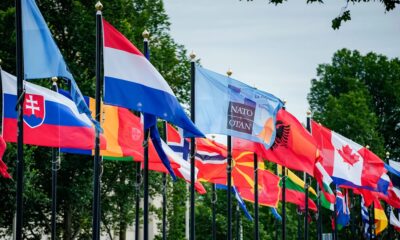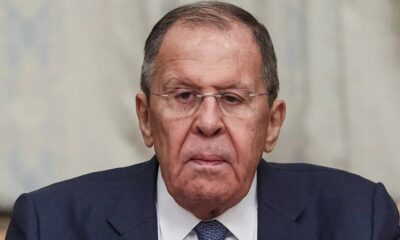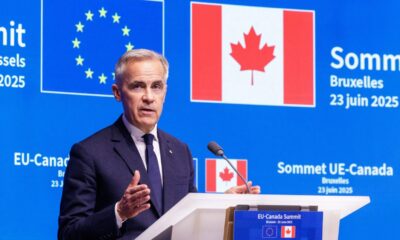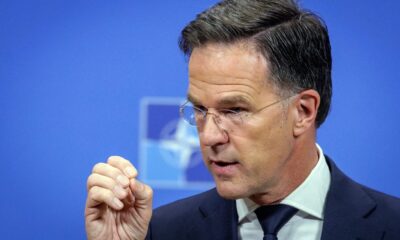Opinion
Ukrainian counterattack on the “lone wolf” in Kursk
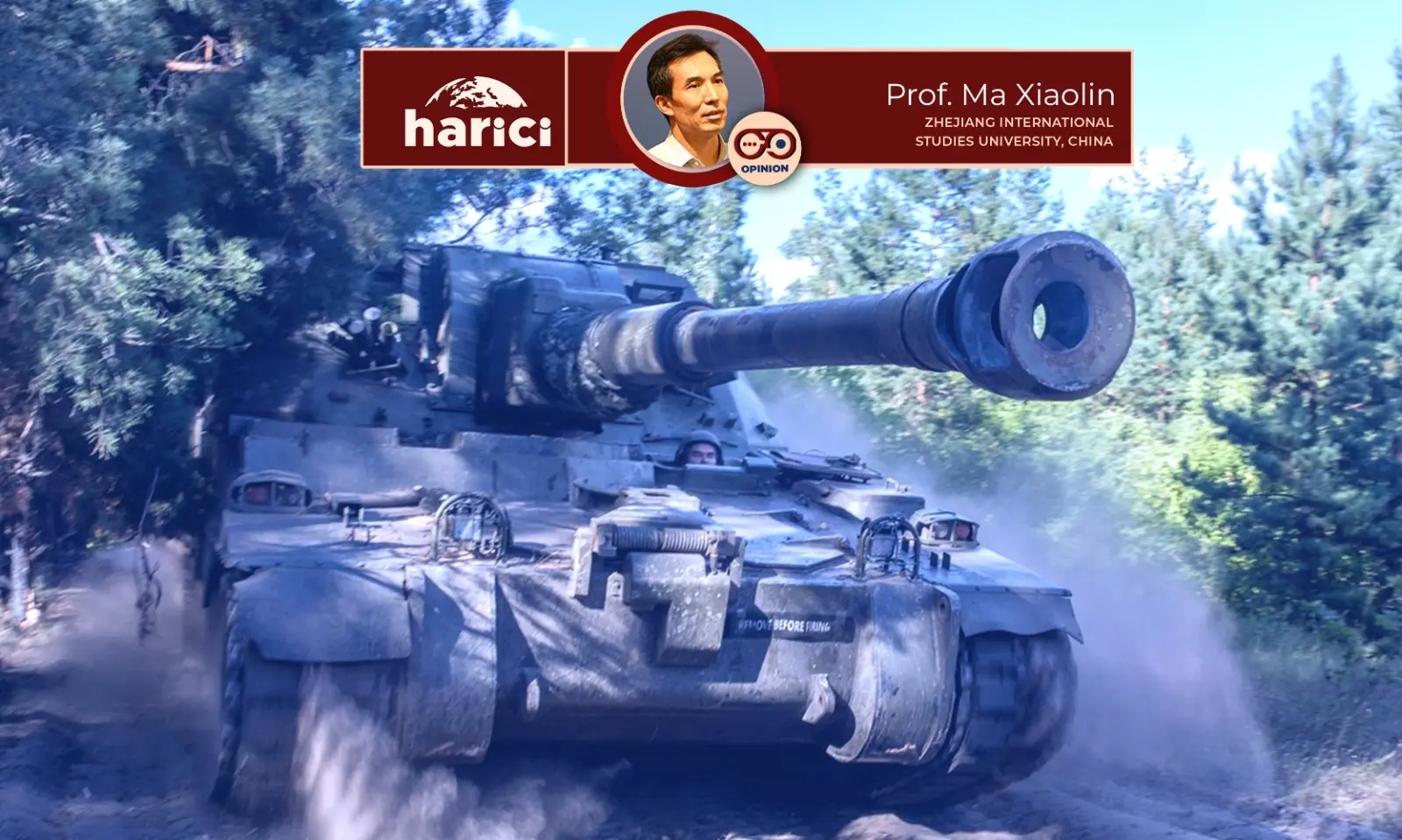
On 16 August, the Ukrainian army launched a raid on Kursk, which lasted for 10 days without a decision on the outcome, and the Ukrainian army even announced the establishment of an interim administration. From a strategic point of view, this successful tactical raid by Ukraine is a rare event since the beginning of the war, but it is doomed to be a “lone wolf” operation with no impact on the overall situation, whose political significance is greater than its military significance and rather limited, and is not a turning point in the war, but a desperate attempt before the start of ceasefire negotiations.
On 6 August, the Ukrainian army entered the Russian Kursk Oblast from the northern border line in large-scale and regular units, occupying an area of more than 1,000 square kilometres, 35 kilometres deep and 40 kilometres wide, and taking control of 75 settlements within 10 days, forcing the Russian side to urgently evacuate some 120,000 inhabitants. Whereas Kursk and the border areas to the north and south of it, Belgorod and Bryansk, had previously only been attacked by irregular armed groups such as the “Free Russia Legion”, the capture and loss of part of the country by regular troops meant that Russia experienced a similar crisis for the first time since the end of the Second World War, a situation that was both humiliating and degrading compared to the small scale of the casualties.
Kursk suddenly became a new frontline for Russia and Ukraine and a new focus of global attention, described by the Western media as Russia’s biggest defeat since the beginning of the war. For the first time on the Russian-Ukrainian battlefield, a cross-border dogfight situation has emerged and Russia’s “weaknesses” and soft underbelly in intelligence gathering, strategic foresight, border defence and many other areas have been exposed. Repeated border raids by the Free Russia Legion and the insurgency of the Wagner Group, which easily approached the capital Moscow, did not lead to the optimisation of the Russian army’s defence system outside the main battlefield.
The capture of Kursk by the Ukrainian army has caused a sensation because the city is only 500 kilometres from Moscow. This distance directly explains why Russia has fought so persistently against NATO’s inclusion of Ukraine in its bloc. After five rounds of enlargement, Russia’s traditional ‘security borders’ have shrunk to more than 1,000 kilometres from Moscow, and therefore the constant approach of NATO’s military vehicles towards its western gate has become unacceptable to Russia.
Some observers exaggerate the military value of the Kursk breakthrough, believing that it will be a turning point in the Russian-Ukrainian war. In fact, Kursk is a “city of victory”, reminding NATO that the war against Russia is not easily won. During the Second World War, the Battle of Kursk broke out, Germany and the Soviet Union spent more than 8,000 tanks, more than 5,000 combat aircraft and more than 1.5 million soldiers, but in the end Germany failed and switched from strategic offensive to strategic defence, and the Battle of Kursk became the turning point of the Second World War.
Forbes.com reported that the Ukranian Army used four mechanised brigades and an air assault brigade, with a total strength of about 10,000 soldiers and 600 armoured vehicles. Although Russia remained momentarily passive, it did not panic and did not withdraw large numbers of troops for reinforcement from the Donbass battlefield, but instead withdrew and mobilised new forces to block the offensive. Analysts believe that if the Ukrainian army does not withdraw within two to three weeks, it will be cut off and surrounded by Russian troops, who are adept at drawing the enemy into a deeper and more circuitous battle.
After two and a half years of tough resistance, while Ukraine has consistently expressed a desire for peace talks, it has suddenly launched a remarkable offensive, and there are various interpretations of the tactical and strategic aims of this move. Ukrainian President Zelensky has stated that he wants to force the other side into peace talks by moving the war to Russian territory. This operation was the ‘demonstration’ of Ukraine’s new Chief of the General Staff, Oleksandr Syrskyi, in his first six months in office, and was decided independently, without informing the main allies, such as the US, Germany and the UK, beforehand. In a way, this shows that Ukraine no longer wants to be under the influence of NATO.
A comprehensive assessment reveals that the Ukrainian army’s raid on Kursk had several objectives: First, to boost the morale of its own soldiers and civilians by moving the war to enemy territory, to create panic and war fatigue on the Russian side, and to show NATO that the Ukrainian army is not ‘helpless’. Secondly, to change the passive situation on the Donbas front by redirecting Russian troops to the north, avoiding the real danger, in a kind of ‘weakening the enemy by luring fighters to the North’ strategy. Thirdly, defending some areas or controlling important facilities, forcing Russia to make concessions and gaining an advantage in peace negotiations, for example by controlling the nuclear power plant in Kursk and the Suja natural gas flow to Europe.
Over the past few months, the Russian army has carried out a strategic counter-offensive against Ukraine along the Donbass and has continued to advance the battle line. After two and a half years of war of attrition, Ukraine has come to the conclusion that it is absolutely impossible for NATO to confront Russia directly, if this “European version of the war in Afghanistan” continues, Ukraine’s losses will be even more severe. In addition, the uncertainty of the elections in the US White House and the advocacy by the Republican candidates and former President Trump and his associates Vance of NATO’s reconciliation with Russia, sacrificing Ukraine’s interests, shows that Ukraine cannot escape the fate of being “initially supported and then abandoned” and is therefore increasingly willing to accept peace talks. Whether it is to win Nato’s help and support or to start peace talks with Russia, Ukraine needs a victory to build a strong case.
Despite the loss of Kursk for a time and the embarrassment of Russian “carelessness”, Western observers are generally not optimistic about the risky offensive of the Ukrainian army, calling it a “big gamble”. Ukraine’s greatest weakness is that, due to its insufficient manpower, it does not have the capacity to open a second line of battle and is unlikely to be able to defend large territories for long. Moreover, an attack in depth could lengthen the front line, making it easier for the Russian army to cut off, encircle and destroy Ukrainian troops. Of course, such an eventual defeat in the war could have pushed more national and even foreign forces back in favour of ceasefire negotiations, perhaps to the satisfaction of the Kiev authorities.
War is a process in which comprehensive national power and the combination of various factors determine victory or defeat, not to mention the fact that the Russian-Ukrainian war is part of a complex and protracted Ukrainian crisis and the ultimate instrument of struggle. In the face of the Russian-Ukrainian war, many people are accustomed to assessing gains and losses in terms of “fairness”, ignoring the basic and decisive elements of the war, in particular the sources of war and the battlefield of the two sides; some people assess the Russian-US-European game in Ukraine in terms of values, ignoring the historical lesson that “your fate will be decided by your enemy”.
The reality of the Russia-Ukraine war, which has been going on for two and a half years, shows that Russia, which is engaged in historical confrontations with NATO and even the West and is trying to organise the security environment in Europe, will not easily give up its goal of “special military operations”. While NATO, led by the United States, does not dare to risk a direct military confrontation with Russia, the attempt to defeat Russia on its own territory through proxy wars is proving unsuccessful. The only way to stop the damage for all sides is to declare a ceasefire, end the war and seek peace through negotiations.
*Prof. Ma, Dean of the Institute of Studies for the Mediterranean Rim (ISMR ), Zhejiang International Studies University (Hangzhou). He knows the world affairs well, especially the Islamic and Middle East politics. He has worked for many years as a senior Xinhua correspondent in Kuwait, Palestine and Iraq.
Opinion
Viewing the Israel-Iran Confrontation Through the Lens of Grand History
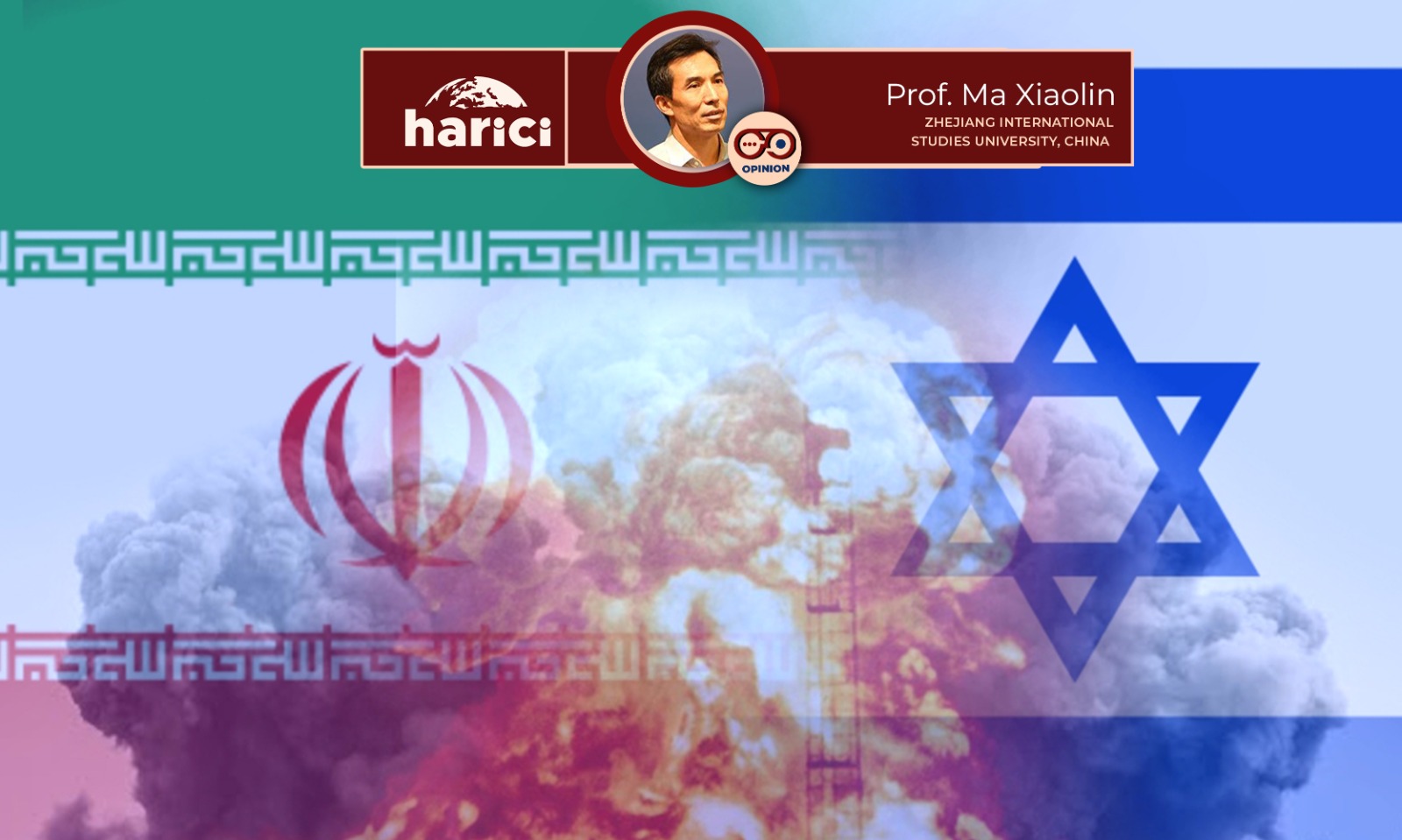
On June 20, the mutual airstrikes between Israel and Iran entered their second week, with both sides suffering heavy losses. The confrontation is escalating, and a ceasefire seems unlikely in the short term. Moreover, the U.S. has openly supported Israel’s strikes on Iran, intercepting Iranian missiles and drones, and is preparing to join in the offensive. President Trump has not only threatened Iran to “completely surrender” but also sent three aircraft carrier fleets to the Middle East, raising the possibility of a two-against-one situation that could resemble the Yugoslav war—defeating the opponent through prolonged joint airstrikes.
The Persian Gulf is a vital oil hub, and Iran’s nuclear facilities are a main target, raising the risk of global oil and gas disruptions and possible nuclear leakage or proliferation. This conflict is more concerning than most regional wars and affects global stability. Beyond the military and diplomatic specifics, it’s necessary to assess the rights and wrongs of the Israel-Iran conflict from a grand historical perspective. This marks a final showdown after over forty years of hostility, ending years of mutual insults, threats, and proxy wars. Now both countries are engaging directly in a high-intensity duel.
Firstly, Israel’s preemptive strike lacks legitimacy and justice, drawing widespread international condemnation. As a UN member, attacking another member without a formal declaration of war—based only on suspicion of nuclear development—violates international law and the UN Charter. It is a blatant infringement of Iran’s sovereignty and civilian rights, and a reckless challenge to modern legal and civilizational norms.
This is not Israel’s first violation of another nation’s sovereignty. In 1956, Israel joined the UK and France in the Suez Crisis. In 1967, citing the potential threat of an imminent attack by Egypt, Syria, and Jordan, Israel launched a preemptive strike, taking the initiative to destroy the air forces of the three countries. It subsequently occupied Egypt’s Sinai Peninsula, Syria’s Golan Heights, and seized the Palestinian Gaza Strip, the West Bank, and East Jerusalem—the holy city—from Egypt and Jordan. In 1981, Israel flagrantly violated the airspace of Jordan and Saudi Arabia, launching a long-range airstrike with a large formation of aircraft to destroy Iraq’s nuclear facility under construction. In 2007, the Israeli Air Force penetrated deep into eastern Syria and bombed a nuclear reactor that was also under construction. Between 2009 and 2012, the Israeli Air Force carried out multiple long-distance strikes over a thousand kilometers away in Sudan, targeting what it claimed were dangerous threats.
Admittedly, Israel was indeed in a state of hostility or ceasefire with these Arab countries, and the governments of these countries did harbor animosity toward Israel. It is also possible that some of them were preparing for war. However, Israel has consistently invoked its small territorial size, lack of strategic depth, and encirclement by hostile forces as justification for launching preemptive offensives, in order to maintain absolute military superiority and ensure its own security. In reality, since its establishment in 1948, Israel has never fundamentally overcome its strategic predicament. One key reason lies in its excessive reliance on military means and its deep attachment to warfare, leading it to become, in effect, a military force operating under the guise of a state.
Now possessing nuclear weapons and overwhelming superiority, Israel’s justification for attacking Iran over suspected nuclear ambitions is widely condemned as unjust and hypocritical.
The confrontation between Israel and Iran is a continuation of the “Sixth Middle East War,” which erupted on October 7, 2023. Although the immediate trigger was the offensive launched by the Palestinian Islamic Resistance Movement (Hamas), the deeper root lies in Israel’s long-standing illegal occupation, exploitation, and encroachment upon Palestinian territories. It reflects the persistent dynamic of occupation and resistance, plunder and counter-plunder, that has defined the Israeli-Palestinian conflict for over half a century. While this round of war may appear to have resulted in a military victory for Israel—defeating Hamas and its allies, including Hezbollah in Lebanon and the Syrian government, and even humiliating Iran for its involvement—the underlying cause of the conflict remains unresolved: Israel’s continued refusal to return the Palestinian, Lebanese, and Syrian territories it illegally occupies.
According to international law, peoples under occupation have the right to armed resistance, and states subjected to aggression have the right to self-defense. This is the crux of the Middle East dispute and the reason why Israel finds itself increasingly isolated and lacking in international support.
That said, Iran cannot be regarded as entirely innocent in the face of Israeli attacks. Israel’s illegal occupation of Arab territories is fundamentally a dispute between Israel and Arab states, and international opinion has largely sided with the Arab position, consistently condemning Israel’s occupation practices. However, since the establishment of the Islamic Republic in 1979, Iran has refused to recognize Israel as a sovereign state and has maintained a hostile stance toward a country with which it neither shares a border nor has any territorial disputes. Moreover, Iran has continuously supported Hezbollah in Lebanon and hardline Palestinian factions in their military struggle against Israel, thereby constituting a substantive challenge to Israel’s national security and regional stability.
In recent years, Iran has used its involvement in the international war on terror and its nuclear deal with the Obama administration to secure tacit recognition of its regional sphere of influence. It successfully established the “Shia Crescent” from the Persian Gulf to the Mediterranean, forming a Tehran–Baghdad–Damascus–Beirut–Sana’a axis. The Islamic Revolutionary Guard Corps and large numbers of Shia militias have infiltrated Syria and set up numerous military bases, posing a direct threat to Israel. This in turn has prompted Israel to repeatedly bomb Syria—who has the will but not the ability to retaliate—ultimately leading to the collapse of the Assad regime that ruled Syria for decades.
Iran’s deep involvement in Middle East conflicts—especially the Palestinian-Israeli and Arab-Israeli conflicts—is not based on international legal norms, but rather on pan-Islamist ideology. This ideology holds that Muslim countries have a duty to liberate occupied Islamic lands and oppressed Muslim brothers. However, traditional religious law cannot replace modern international law, and sympathy for Palestinians, Lebanese, or Syrians cannot justify proxy warfare. Over time, Iran has become not just the base and backer of Israel’s enemies but has also brought war and disaster upon itself. From the perspective of international law and international relations, it is not excessive to say Iran “brought the attack upon itself.”
In essence, is Iran really aiming to solve the Palestinian-Israeli and Arab-Israeli conflicts? If it were, Iran would support peaceful negotiations based on UN resolutions, and at least acknowledge Israel as a sovereign state, even if not normalize relations. Iran would align with the collective stance of Arab nations, advocating “land for peace,” and recognize Israel’s sovereignty contingent on withdrawal from occupied Arab lands. Instead, Iran has pursued a path that overrides Arab nations’ consensus, attempting to dominate Arab-Israeli territorial disputes like an impatient outsider. Iran’s Middle East policy is fundamentally driven by Persian nationalism—under the guise of reclaiming Arab lands, it seeks to increase regional influence while avoiding the disadvantages of being an ethnic and sectarian minority in the Arab-dominated Middle East.
Third, the pain and historical choice facing the peoples of Israel and Iran. When war breaks out, it is the ordinary people of both nations who suffer most. But the greatest value of this war may be whether it awakens public opinion in both countries—enough to reshape national policy and eliminate the cycle of hostility.
Both Israel and Iran, to varying degrees, are democratic nations—at least in law, with separation of powers and regular leadership changes. While their systems differ—Israel as a Western-style multiparty democracy and Iran as a theocratic authoritarian Islamic republic—both countries’ political structures ultimately reflect the will of their people. The enduring policies that brought today’s conflict cannot be blamed solely on governments; the people share responsibility.
Israel’s aggressive and expansionist policies are deeply tied to the worldview, security mindset, and sense of justice of its Jewish majority. Centuries of exile and suffering—culminating in near extinction—have become a cultural gene that prioritizes survival and security over neighborly rights. This has prevented strong public pressure to return occupied lands for peace, and instead enabled far-right forces to drive policy toward militarism, giving the government unchecked power and exposing Israelis to endless danger.
As millions of Gazans live in what’s called “the world’s largest prison,” as over 50,000 Palestinians have died in the past year and continue to bleed and starve, the Israeli public remains numb. Watching their government seize neighboring land and fuel national prosperity while ignoring the lasting hatred this creates, Israelis drink poison as if it were wine. When current far-right leaders drag the country into war with Iran to save their political careers, the response is panic and calls for harsher retaliation—not reflection on the nation’s course.
Iran, meanwhile, regularly changes leadership but maintains its confrontational foreign policy—with the consent or apathy of its people. Over 40 years ago, Iranians overthrew the corrupt and brutal Pahlavi monarchy in a revolution led by clerics. The new Islamic Republic soon plunged into an eight-year war with Iraq, costing nearly a million lives. Yet these painful lessons did not shift public will toward focusing on internal development. Instead, Persians embraced a mix of nationalist nostalgia, martyrdom in holy wars, and emotionalism—fueling continued confrontation with Arab neighbors and the outside world.
Over the past few decades, the Arab-Israeli conflict has undergone a major transformation. Starting with peace between Egypt, Jordan, and the PLO with Israel, and progressing to the normalization of relations between Israel and the UAE, Bahrain, Morocco, and Sudan, the political landscape of the Middle East has shifted significantly. The region’s political main theme has turned toward peace, reconciliation, cooperation, and development. However, the Iranian people continue to blindly follow their government’s outdated and rigid policies, enduring hardship and political repression, sacrificing economic development and national progress, while stubbornly clinging to anti-Israel rhetoric and ambitions to eliminate Israel. They persist in claiming the mission of reclaiming Arab lands, even at the cost of engaging in a prolonged struggle with the U.S. and the West, dragging their country into isolation and turning their capital into a city that people flee.
2,500 years ago, the ancestors of the Iranian people established the first empire spanning Asia, Africa, and Europe—the Persian Empire. The Achaemenid dynasty ruled with an inclusive and open approach. It was this dynasty that generously freed the Jews from Babylonian captivity after 70 years of enslavement. The Jews were so moved that they revered the Persian king Cyrus the Great as a savior. The Jewish princess Esther, concealing her identity, became queen and won the favor of King Xerxes. Together with her powerful uncle Mordecai, they used their influence to eliminate their enemies, the Amalekites, and protect the Jewish people. These legendary stories represent a historical peak of Jewish-Iranian coexistence and harmony.
Yet in the modern age, Israel and Iran have become bitter enemies for nearly half a century due to diverging national policies. This is a tragic irony, a misfortune for both nations and their people, and a betrayal of the shared legacy of Jewish and Persian civilizations. The ongoing and escalating indirect war between Israel and Iran will have no winners regardless of the outcome. Hopefully, the decision-makers and voting citizens of both nations will awaken from the flames of war, shift their policies, abandon mutual hostility, and join Arab states in upholding the principle of “land for peace.”
They should work to resolve the Palestinian issue based on the two-state solution, expand the Abraham Accords by supporting the return of Lebanese and Syrian territories through negotiations, and build mutual understanding, acceptance, and respect. Only then can the long-standing conflict between Israel and Iran come to an end. Together, they can help the Middle East break free from cycles of war and chaos, and move toward peace and development like other regions that have already put large-scale violence behind them—making up for lost time and missed opportunities for prosperity.
Prof. Ma is the Dean of the Institute of Mediterranean Studies (ISMR) at Zhejiang International Studies University in Hangzhou. He specializes in international politics, particularly Islam and Middle Eastern affairs. He previously worked as a senior Xinhua correspondent in Kuwait, Palestine, and Iraq.
Opinion
Is Israel done with ‘the devil it knows’?

As someone who has wanted to bomb Iran for nearly 30 years, it’s not hard to understand that Israeli Prime Minister Benjamin Netanyahu has his own agenda and is using claims of Iran developing nuclear weapons as a pretext. This demonization campaign has been quite long-running. Even in the 1990s, he persistently made this claim, which had no basis in fact. In fact, US intelligence reports at the time clearly showed this claim to be false. The most recent US intelligence report, published this past March, says the same thing. Despite this, Netanyahu persists with his claims, wildly exaggerating them. One of his latest claims is that Iran will build nuclear weapons and distribute them to terrorists.
Iran’s right to a peaceful nuclear program, conducted with full transparency under the supervision of the International Atomic Energy Agency [IAEA], should be considered a normal state of affairs. Indeed, in 2015, under President Obama’s leadership, the US and the UK supported this agreement, and it was signed. At the time, Iran also stated that it had no nuclear weapons program and welcomed being fully open to inspections.
When Trump took office in 2017, he withdrew from this agreement in 2018—likely due to pressure from the Israel lobby in the US—plunging everything back into uncertainty. Trump’s “maximum pressure” policy, on the contrary, pushed Iran to increase its uranium enrichment activities. It is extremely interesting and confusing that Trump, having withdrawn from a previously agreed-upon deal during his first term, would now strive to return to it in a potential second term. It would be naive to think that Trump has learned from the past and wants to correct his mistake.
It is very clear that Israel, under Netanyahu’s leadership, wants to topple the Iranian regime using the nuclear program as a pretext. It is advancing toward this goal step by step, virtually paralyzing opposing forces and preventing them from offering any meaningful response. At this point, it is also moving away from the typical Western approach of preferring “the devil you know.”
The pretext of nuclear bombs instead of weapons of mass destruction
An attempt to bring about regime change in a Middle Eastern state was also made 20 years ago in Iraq. We witnessed the horror created by the Iraq plan, which led to the rise of ISIS and the deaths of millions. At the time, US Secretary of State Colin Powell, in his speech at the UN, said, “Saddam Hussein has chemical weapons. Saddam Hussein has used such weapons and has no qualms about using them again against his neighbors and his own people.” In his presentation, Powell used reconnaissance photos, detailed maps and charts, and even recorded phone conversations between high-ranking members of the Iraqi army. The phrase “weapons of mass destruction,” which he repeated 17 times during his hour-long speech, accompanied by information that intelligence officials had assured him was reliable, became the public justification used by the Bush administration to legitimize the invasion of Iraq.
A month and a half after Powell’s UN speech, President Bush ordered airstrikes on Baghdad. In a televised address to the nation, Bush said this was the beginning of a military operation “to disarm Iraq, to free its people, and to defend the world from grave danger.” US forces, along with their internal collaborators in Iraq, overthrew the Saddam Hussein regime within a few weeks, and evidence of Iraq’s so-called “weapons of mass destruction” was nowhere to be found.
The Bush administration used the credibility of Colin Powell—known for his opposition to war, particularly US military interventions in the Middle East—to bring about regime change in Iraq. Powell later described his UN speech as a “major intelligence failure” and a “blot” on his record. Before he died, Powell expressed his regret, admitting that his sources had turned out to be wrong, flawed, and even deliberately misleading.
If Israel succeeds in neutralizing Iran—and perhaps even turning it into an ally in the medium to long term—guess which conventional power in the region will be its next target? Efforts to demonize Türkiye have been underway for a long time, although they are currently on the back burner. A bilateral confrontation in the region would unfold on a very different footing than a trilateral balance; we had better take precautions and fasten our seatbelts.
Middle East
An assault on the Axis of Resistance: The Israeli escalation against Iran and its impact on Palestine and Gaza

Khaled al-Yamani, Popular Front for the Liberation of Palestine (PFLP)
Events in the region are accelerating as if we are on the brink of a new political and security earthquake, led by the direct confrontation between the Islamic Republic of Iran and the Zionist entity, under blatant American complicity. This confrontation, though it appears to be military and security-based, is in essence a major war targeting the entire project of resistance — from Tehran to Gaza.
Latest escalation: Aggressive maneuvers in the name of ‘Israeli security’
The Zionist entity launched an aerial assault targeting military sites deep within Iranian territory. Under recycled pretexts — related to Iran’s nuclear and missile programs — “Israel” continues its strikes, not only against Tehran, but also against its allies in Syria, Lebanon, Iraq, and Yemen.
But what’s happening isn’t just “preemptive strikes” as Western media claims — it is the continuation of a long war waged by the United States and “Israel” against the Axis of Resistance, aiming to break the balance of deterrence established by Iran and its allies after years of strategic patience and military development.
America and Israel: One goal behind false slogans
This escalation cannot be separated from direct American direction. The Biden administration, though claiming to seek de-escalation, in practice provides full political, military, and intelligence cover for this aggression.
The goal is clear: to dismantle the Axis of Resistance and deprive Iran of any ability to support its allies — first and foremost, the Palestinian resistance factions.
The U.S. administration knows that Iran’s strength does not lie solely in its nuclear program, but in its presence in the regional equation — from Lebanon to Iraq to Palestine. Therefore, striking Iran means breaking the backbone of the Jerusalem Axis.
What does Gaza and Palestine have to do with this?
Any attack on Iran is, by extension, an attack on Gaza. What is plotted in Tehran reflects immediately in the alleys of Khan Younis and the Jabalia refugee camp. The rockets that overwhelmed the Israeli army during the “Al-Aqsa Flood” battle would not have reached the resistance without decades of accumulated Iranian support.
Now, the Zionist entity — with American backing — seeks to cut off the lifeline to Palestine and destroy the support network Iran has built for the resistance, whether in weapons, knowledge, or training.
Thus, striking Iran is not separate from the ongoing aggression on Gaza; it is a direct extension of it, and part of the suffocating siege aimed at weakening the Palestinian people’s ability to endure and resist.
The Axis of Resistance: Unity of fronts and a shared fate
The new equation imposed by the Axis of Resistance after the “Sword of Jerusalem” battle — and later the “Al-Aqsa Flood” — has become a nightmare for the enemy: the unity of fronts. No longer is Gaza alone, or the southern suburbs alone, or Sanaa alone.
Hence, the Zionist entity is now trying to preempt any emerging united front by striking at the center — Iran — before a full-scale confrontation erupts that could spell the end of “Israel” as we know it.
Conclusion: The battle continues… and Palestine remains the heart
We are facing a pivotal moment in the history of this struggle. The enemy seeks to paralyze the Axis of Resistance at its strategic core and turn the conflict into a fight for survival. Yet the Axis today is stronger than ever.
Despite the wounds, Gaza remains at the heart of this confrontation. The battle is not just being fought in Iranian territory or over the skies of Lebanon and Syria — it is being fought over the future of Palestine, from the river to the sea.
Therefore, it is the duty of all the free people of the world, and all honest journalists, to speak the truth.
If Israel emerges victorious from its ongoing confrontation with the Islamic Republic of Iran, the consequences of that victory will not be limited to Tehran or the Axis of Resistance alone. Rather, they will extend to impact the entire regional balance of power — with Türkiye’s role at the center of that shift.
An Israeli victory would, in effect, cement its dominance as an unchallengeable military force in the Middle East, fully backed by the United States. This would open the door to a new phase of political interference and pressure, especially against regional powers that still maintain a degree of independent decision-making — chief among them, Türkiye.
Türkiye, which seeks to maintain an independent and balanced role between East and West, and whose interests are intertwined with Russia, Iran, and Central Asian countries, would come under increasing pressure to reposition itself according to Israeli-American terms. It may find itself facing two options: either submit to the new regional equation, or enter an unwanted political — and possibly security — confrontation.
From this perspective, what is happening in Tehran today is not isolated from what could happen in Ankara tomorrow. If Iran falls as an independent regional power, Türkiye may be next in line.
The assault on Iran is an assault on Palestine. Defending Tehran is defending Jerusalem.
This battle has strategic implications not only for the Palestinian cause and the Axis of Resistance against Zionist-American hegemony, but its outcomes will extend across the entire region — particularly affecting major regional powers such as Türkiye, Iran, and Egypt.
If Iran stands firm and emerges victorious in this confrontation, it will strengthen the role of these countries in resisting Zionist arrogance and domination. One could even say that such a victory may bring an end to Zionist hegemony over the region and, as a result, weaken American influence as well.
It would allow these countries to become more independent and distant from U.S. control, which seeks to turn the peoples of the region into subjects by dividing them into warring sects and identities. Therefore, solidarity among these countries at this moment is one of the key elements of victory — and a potential beginning of liberation from Zionist-American domination.
-
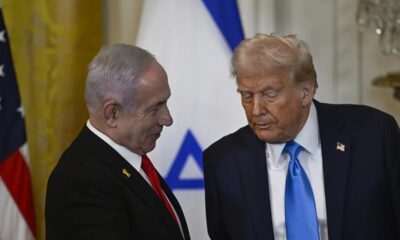
 Middle East4 days ago
Middle East4 days agoUS to launch major bombing campaign against Iran this weekend, Hersh reports
-

 Diplomacy1 week ago
Diplomacy1 week agoFormer diplomat warns forcing Iran out of the NPT is the greatest danger
-

 Middle East1 week ago
Middle East1 week agoIran targets Mossad and Unit 8200 in missile attack on Tel Aviv
-

 Diplomacy1 week ago
Diplomacy1 week agoFormer CIA analyst says Israel used ceasefire talks as a trap
-
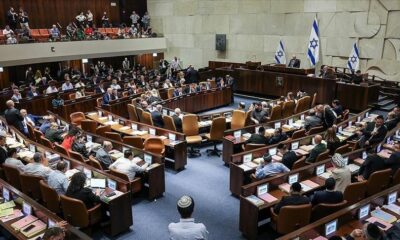
 Middle East2 weeks ago
Middle East2 weeks agoNetanyahu’s government survives no-confidence vote as Haredi crisis is delayed
-
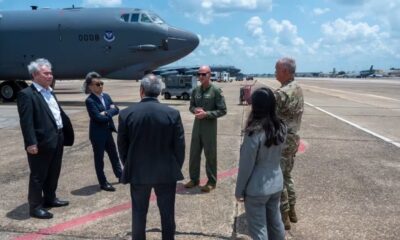
 Asia2 weeks ago
Asia2 weeks agoJapan, US showcase B-52 bombers in nuclear deterrence dialogue
-

 Middle East1 week ago
Middle East1 week agoIranian missile attack causes heavy damage across Israel
-
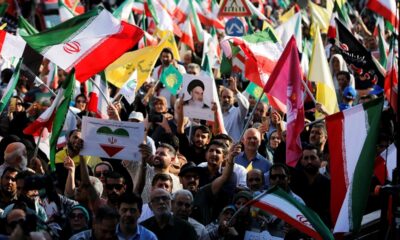
 Diplomacy1 week ago
Diplomacy1 week agoChinese academic analyzes Israel-Iran conflict for Harici: Iran holds strategic importance for China


